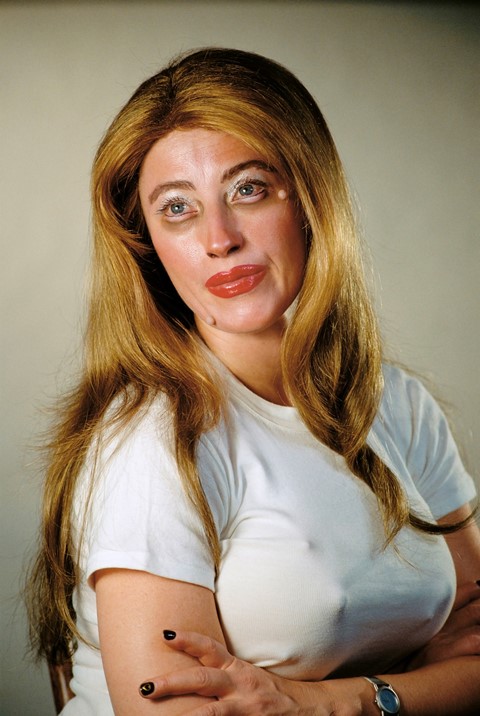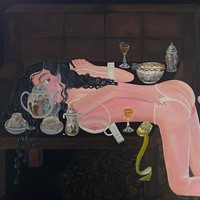These shape shifting, mask wearing, costume donning artists use the camera to challenge one of the oldest mediums in art history
Last week, the Untitled Film Stills series by American artist Cindy Sherman (born 1954) went on show in its entirety for the first time in the UK as part of a retrospective exhibition at the National Portrait Gallery. Recognised for the shape-shifting qualities of her work, this particular series, created between 1977 and 1980, launched Sherman into the spotlight, staging photographs as cinematographic scenes conveying the categories and restrictions imposed upon women’s identities. In a series of 70 black and white photographs, Sherman mimics the aesthetics of B-Movies, old Hollywood, and European arthouse films, portraying the pining, melancholic lover sprawled across the bed, the bored, repressed housewife, the office bombshell, the film noir heroine staring blankly past the camera.
Not only is Sherman’s own identity obscured, but each of the characters she portrays also reflects stereotypes and is shrouded in ambiguity – merely stills within a larger, unknown narrative. The decision to leave each of the photographs as “Untitled”, as well as the ambivalent expressions of the characters in her stills, ensure that the viewer is left wondering about the story and intent of the subject. The effect is to force us to consider how women are moulded to perform and enact varying, one-dimensional stereotypes in media spheres. As the canvas for these variant selves, Sherman fluidly moves between the cliches, establishing a playfulness in the images, and wearing these restrictive gender roles as masks. Sherman summed up her approach in a statement for the German contemporary art exhibition Kassel Documenta in 1982: “I’m trying to make other people recognise something of themselves rather than me.”
“I’m trying to make other people recognise something of themselves rather than me” – Cindy Sherman
Around a decade later, in 1990, fellow American artist Carrie Mae Weems (born 1953) produced the Kitchen Table Series. Comprised of 20 photographs taken at the artist’s kitchen table, Weems portrays one woman in various domestic situations joined by a lover, friends, and her children – played by Weems’ friends, colleagues, and even strangers that she met on the street. In one image, Weems’ character rests her head in her arms, a bottle of wine and an ashtray on the table, she appears lost in desolation. In another, Weems sits at the table while a friend tenderly combs through her hair. In a similar vein to Sherman, Weems’ photographs are untitled, presenting situations from the liminal moments of life. At one moment, she is the distracted lover smoking a cigarette whilst her partner reads a paper in the background. She is also the stern mother leaning across the table to speak to her reproachful-looking daughter. And sometimes she is portrayed alone, her hands on the table, she looks straight into the camera, her ambiguous expression illuminated by the lamp.
Although Weems’ ‘woman’ is unnamed, the scenes create a sense of intimacy, looking into the loving relationships and friendships of one woman and her tender and difficult moments, all in the familiar, domestic setting of the kitchen. Through the construction of these scenes from the every day, and the moments of intimacy, sadness, frustration, and melancholy they represent, Weems privileges the manifold possibilities and experiences of black womanhood, putting the complex relationships and realities of women’s lives at centre stage, or at the head of the table. As she remarked in an interview with PBS Newshour about the series: “Somehow I think of myself as standing in for something more than me. That she’s my muse, and this character that I’ve developed leads me through the world in very interesting ways.”
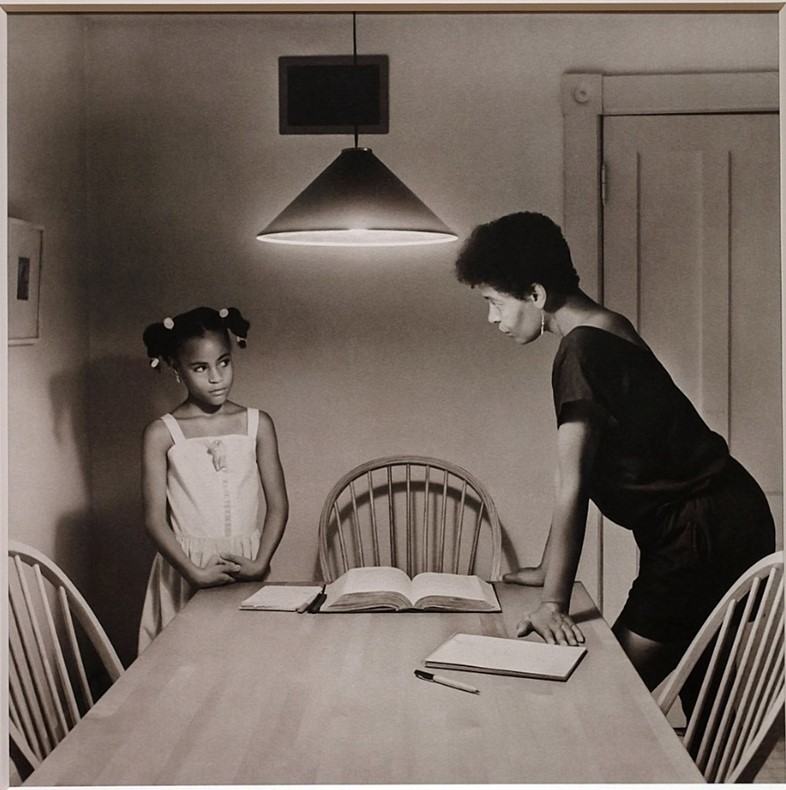
Adopting disguises in portraiture has long been appreciated for its possibilities for experimentation and play, and few places is this more apparent than the work of early 20th-century French artist Claude Cahun (1894-1954). Cahun’s extraordinary series of portraits see the artist take on a multitude of eccentric guises, from bodybuilder to angel, and vampire to puppet. In one portrait from 1928, Cahun wears a porcelain doll-like face and a cape covered in traditional masquerade masks. In another, they stand directly in front of the camera, wearing a suit, hand on hip, with a shaved head. Cahun appears to take props from a dressing up box, playing with illusion and fantasy by donning wings, mime-esque makeup, and standing beside mirrors to produce multiple faces.
As shown in their adoption of masks and mime aesthetics, Cahun’s plural identities are not meant to deceive but are rather a conscious exploration of variant selves. As they famously said in their autobiography Disavowals (1930): “Under this mask, another mask. I will never be finished removing all these faces.” For Cahun, asserting their own identity and acts of defiance went hand in hand. A genderqueer artist active during World War II, Cahun, along with their partner Marcel Moore, was sentenced to death for acts of resistance against the Nazis whilst living on the German-occupied Island of Jersey, although this sentence was never carried out due to the island’s liberation in 1945. With their revolutionary spirit in mind, Cahun’s melodramatic and surrealist portraits can be seen as a form of protest through heightened visibility. For an artist who deviated far from the norms of gender and sexuality at the time, the act of presenting their variant selves, to be visible in their multiplicity was crucially important, overthrowing the archetypes, and crafting a model of identity that celebrated plurality, the eccentric, and unconventional.
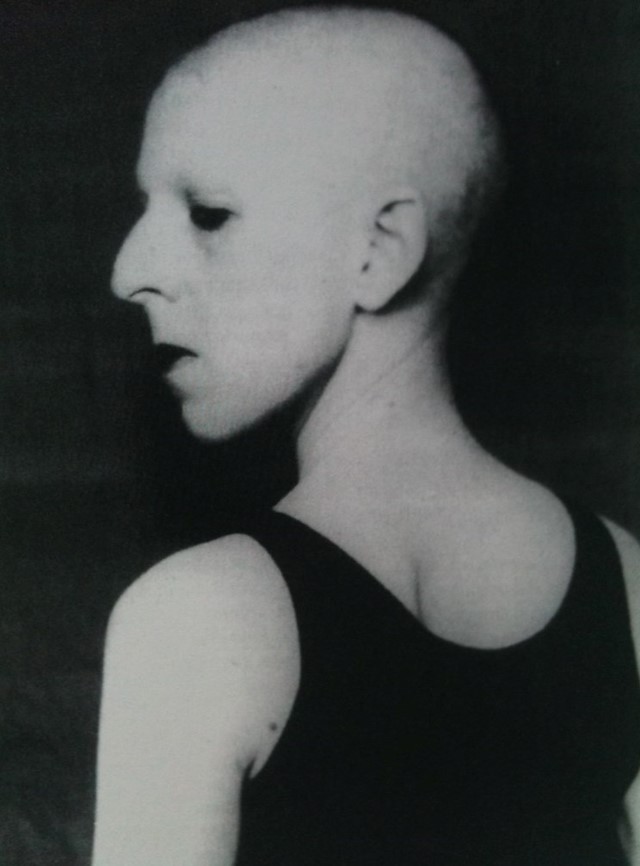
In 2017, Cahun’s works were displayed beside the work of British artist Gillian Wearing (born 1963) at the National Portrait Gallery exhibition Behind the Mask, Another Mask. Despite being created decades apart, the similarities between Cahun and Wearing’s portraits are clear: both utilise costumes and disguises to manipulate their appearances. But while Cahun typically used props and disguises as a way in which to assert their multiple, fantastical identities, Wearing’s portraiture is largely more concerned with imitating the identities of those who already exist – whether her past self, her family, or even fellow artists. In her series Album (2003), Wearing recreates photographs of her family members, portraying her brother in his bedroom, her father in an evening suit, and her own self as a three-year-old girl. Wearing has also disguised herself as fellow artists Claude Cahun, Robert Mapplethorpe, Diane Arbus, and Andy Warhol for a series of portraits.
Despite the element of imitation in these images, Wearing as the artist does not disappear entirely, as we are always aware of her presence through her use of eerie, flesh coloured masks – her own eyes piercing through the holes. Instead, the effect of the conscious performance of others might be seen to explore relational dynamics. Through taking on the guises of the people she is closest to and most admires, Wearing suggests that identity is a layered, rather than solipsistic experience. As she explained in an interview about her 2017 exhibition Family Stories: “I see it as work about people, first of all, and relationships. And it’s the most important thing of all that we have relationships with other people, whether that is blood-related, friendships or connections with people just fleetingly.” Through her portraits, Wearing uses her body to represent and celebrate the relationships with the people that shape our identities.
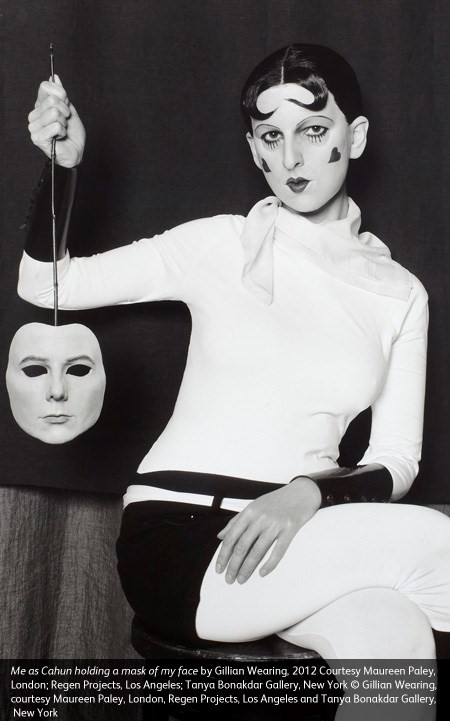
As Wearing utilised the act of imitation in her portraits to illuminate relational dynamics, Cameroonian artist Samuel Fosso (born 1962) adopted similar techniques to represent his connection with the history and culture of his country, as well as the tensions between this and western culture. Soon after picking up the camera for the first time in the 1970s, after being forced to flee Cameroon to the city of Bangui in Central Africa during the Nigerian Civil War, Fosso began to experiment with photographing himself in clothing such as bell bottoms, heeled boots, and frilly shirts, taking on elements of western fashion as seen on the covers of albums and magazines. As these fashions were in direct opposition with accepted standards of fashion enforced by the dictatorship in Central Africa at the time, Fosso’s early portraiture could be seen as a form of youthful rebellion.
In his later works, he experimented more with portraits as a mode of satire and homage. In the series Tati (1997), Fosso utilised costume and disguise to embody recognisable archetypes from Central African culture at the time, bringing to life among others the businessman, the golf player and the tribal chief. In his seminal 2008 series African Spirits, Fosso plays a series of figures from the African civil rights movement, including Martin Luther-King, Malcolm X, and Angela Davies. In a 2009 interview with the New York Times, Fosso said of his work: “Photography has given me a second life. It’s made all lives possible for me.” Fosso’s transformational flair in his portraits allows him to shift between portrayals of himself and recognisable cultural, political, and intellectual figures, demonstrating not only his own ability to shape-shift for the camera, but critiquing and paying tribute to the aesthetic power which makes these figures from African culture and society so enduringly iconic.
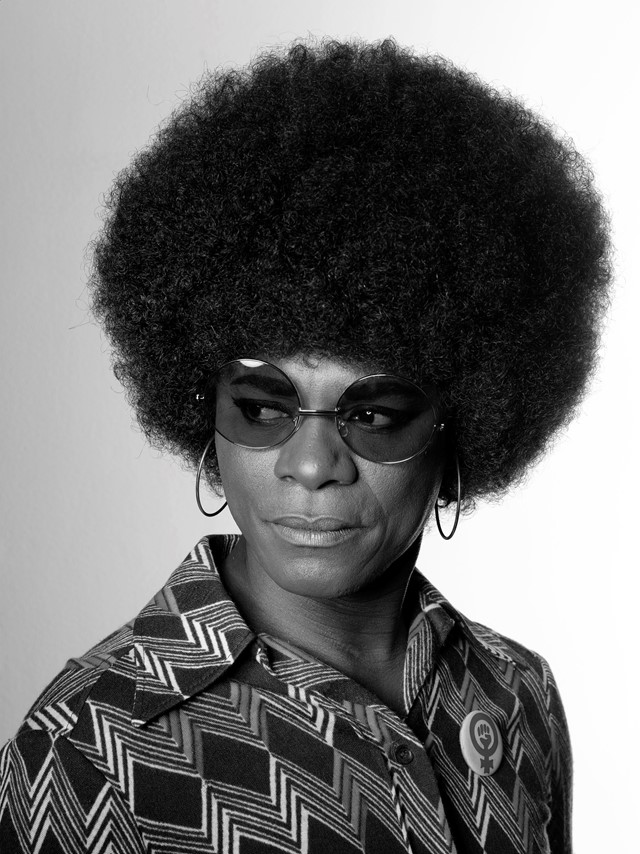
Whilst many artists have adopted portraiture to represent either themselves in all their multiplicities or other personas from our collective consciousness, some have also used their own bodies to craft fictional characters. The Scottish contemporary artist Rachel Maclean (born 1987), who uses film as a medium in which to present herself as a number of vivid, often disturbing characters, is reluctant to describe herself as a portrait artist. As she explained in an interview with the Royal Academy magazine: “They (her characters) aren’t an exploration of me, or anything personal to me; more a splitting of a number of different ideas of identity and stereotype.” In works such as “Spite Your Face” (2017), Maclean utilises fairytale-esque garish visual symbolism to explore contemporary concerns of corruption and untruth in the political landscape, particularly in the wake of the election of Donald Trump.
Although she plays each of the characters, Maclean disappears entirely, transforming through the use of prosthetic makeup into characters with bulging, cartoonish eyes, decadently gold skin, and Pinocchio-long noses, with her voice dubbed over by actors. Maclean’s characters each have individual identities, yet similar to Sherman’s Untitled Film Stills, they possess elements of allegory and indicate wider stereotypical figures within society. Maclean’s own presence within her work may not be immediately visible, but the act of playing the majority of her characters is nonetheless significant. As she explained in an interview: “I like the feeling of the absurdity of all of the characters being me; the paper-thin, almost uncomfortable feeling of needing to believe somebody is an older person but knowing that there’s very obvious prosthetic make-up. I like that sense of everything being an illusion.” Carrying on the traditions of her artistic predecessors, Maclean plays on the tension between reality and illusion to construct allegorical responses to an image-obsessed culture.
Whether challenging cultural stereotypes, embodying multiple personas, asserting marginalised identities, or conjuring works of fiction, all of these artists have extended and experimented with the restraints of the traditional portrait medium. They demonstrate that the self as plural has manifold possibilities of mimicry, of expression beyond the norm. And especially in a time of rapid social and political change, where attitudes towards gender expression and roles are shifting, the portrait offers an opportunity to reject binaries and homogeneity.

